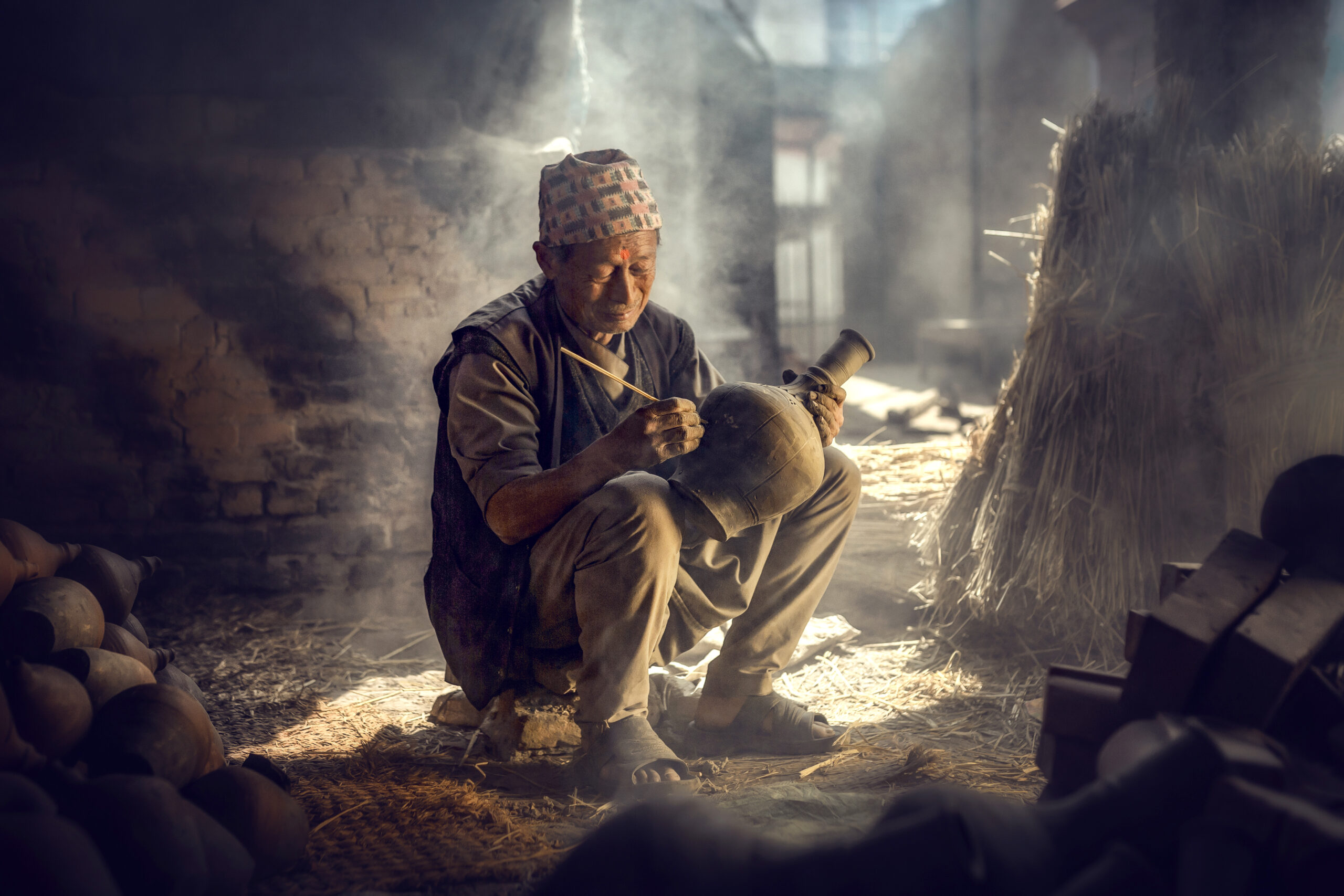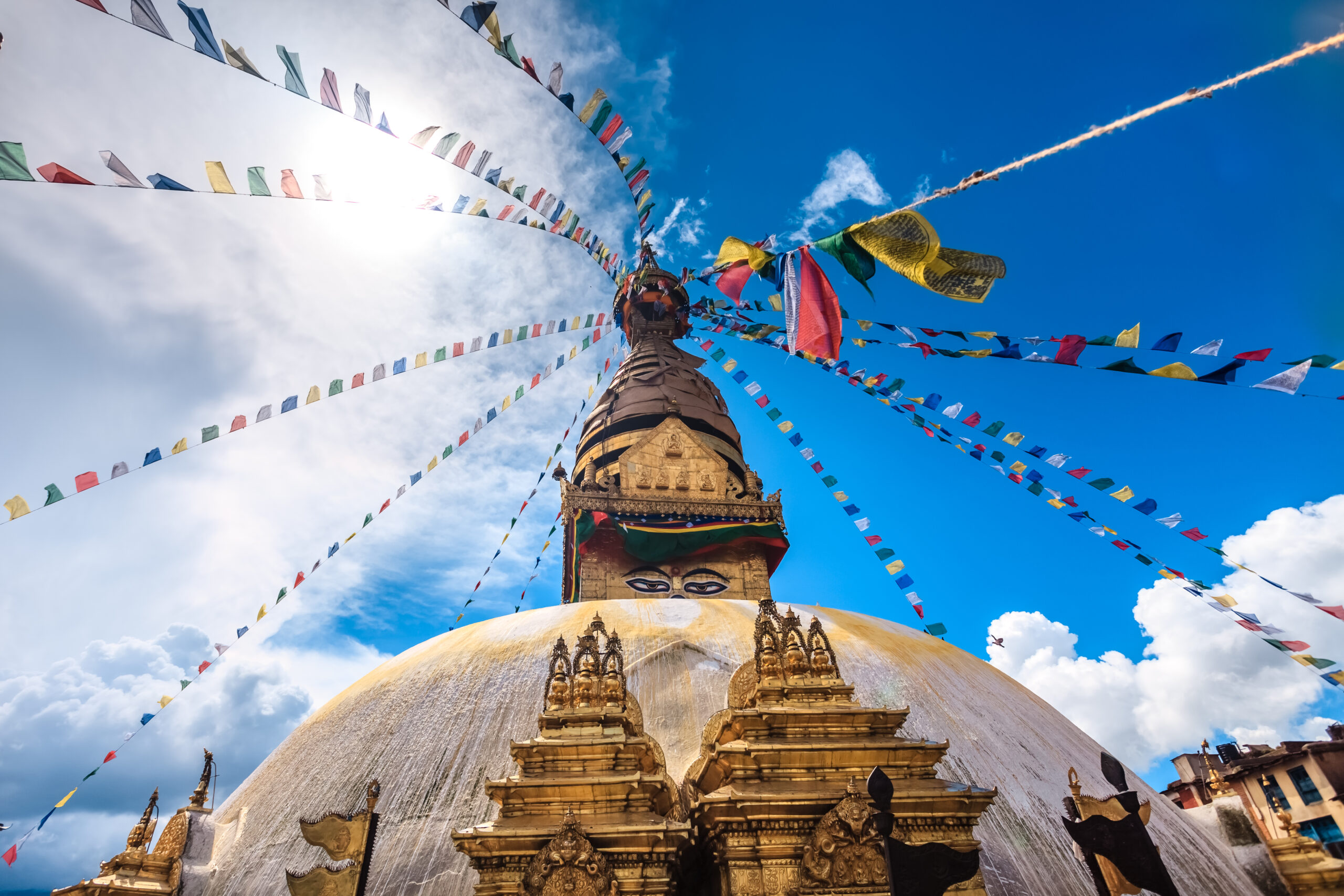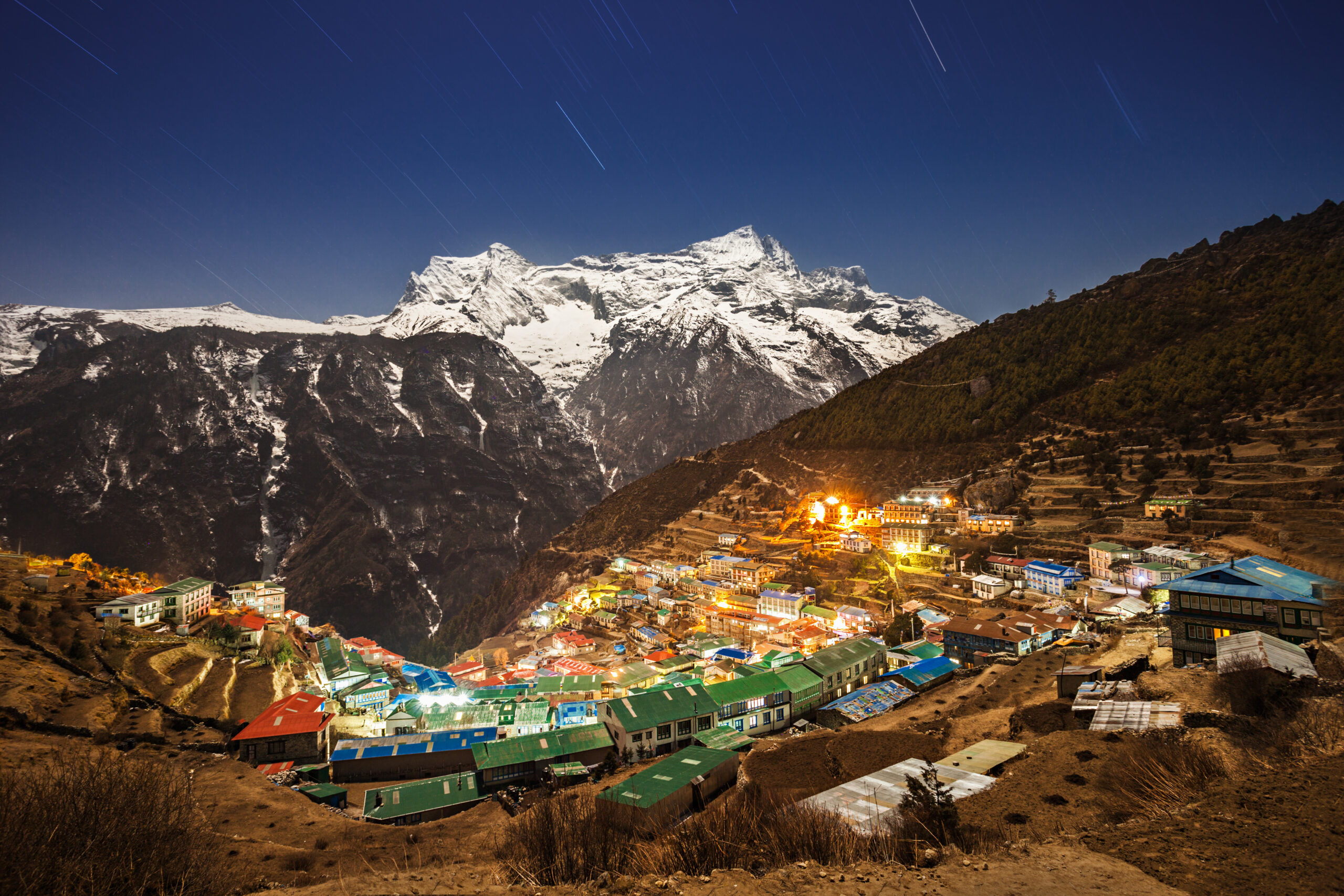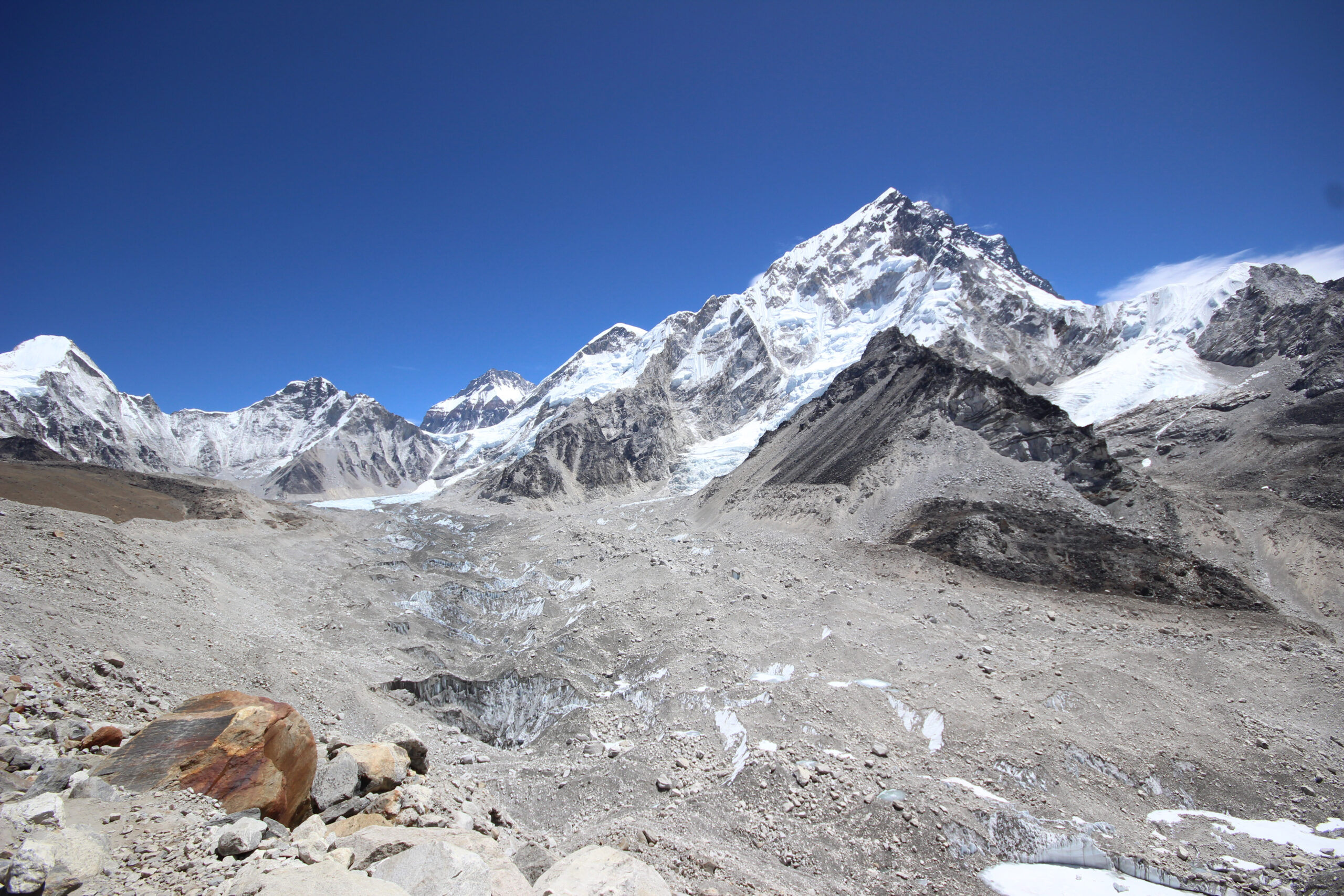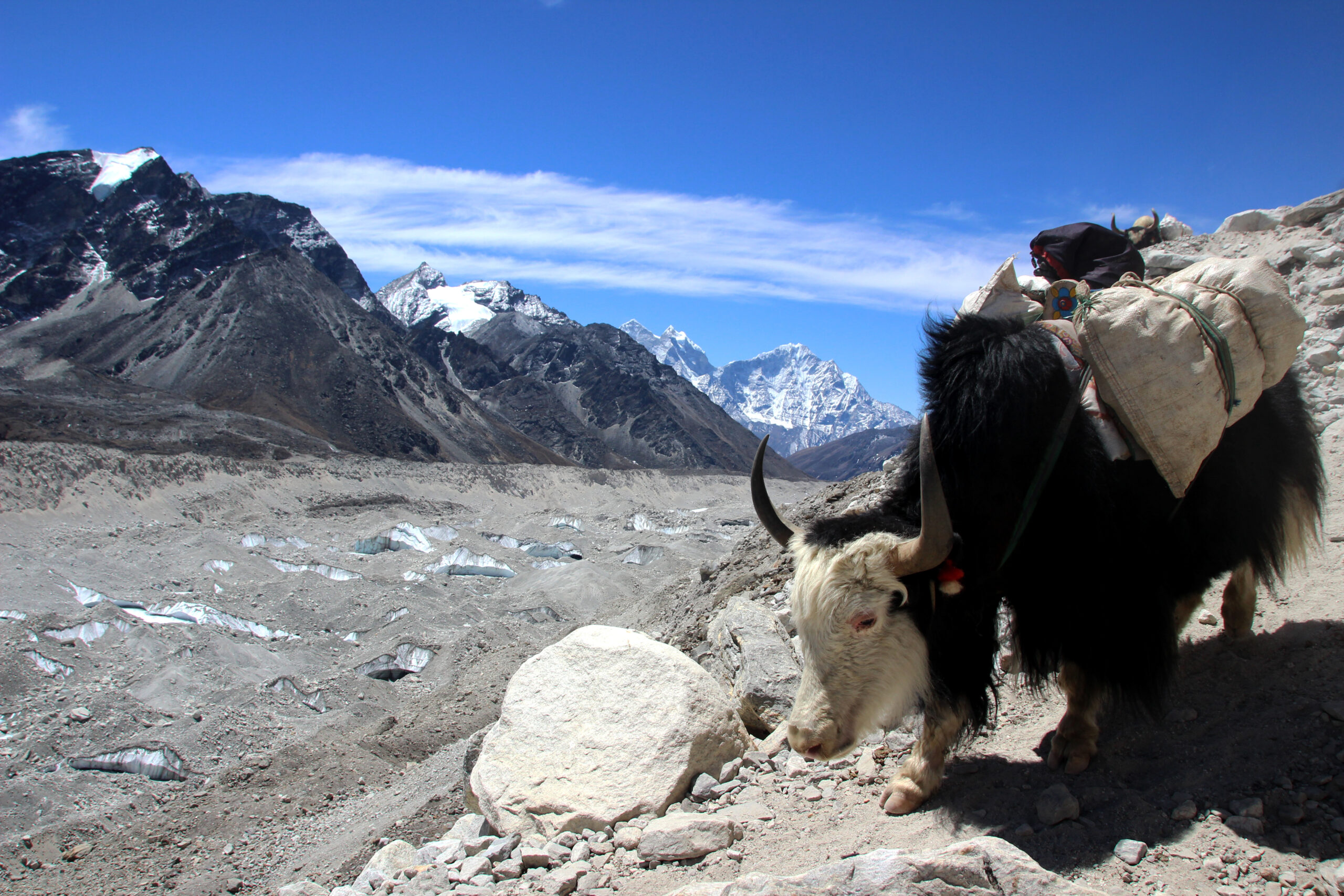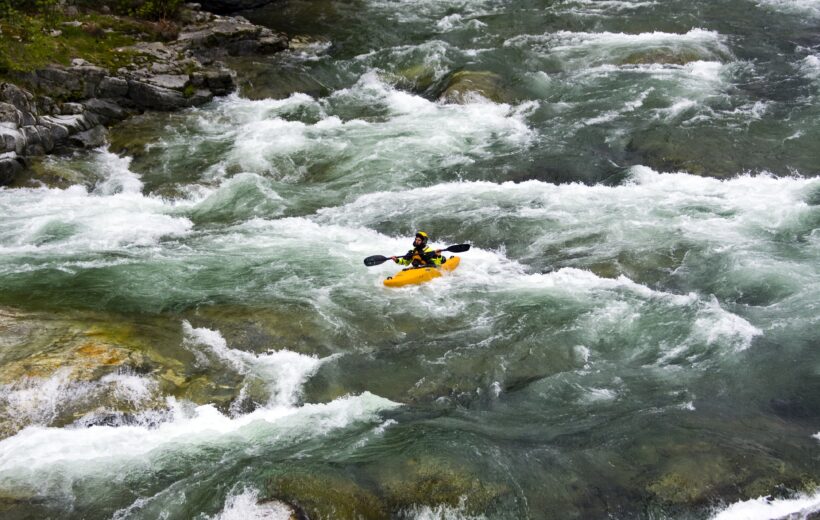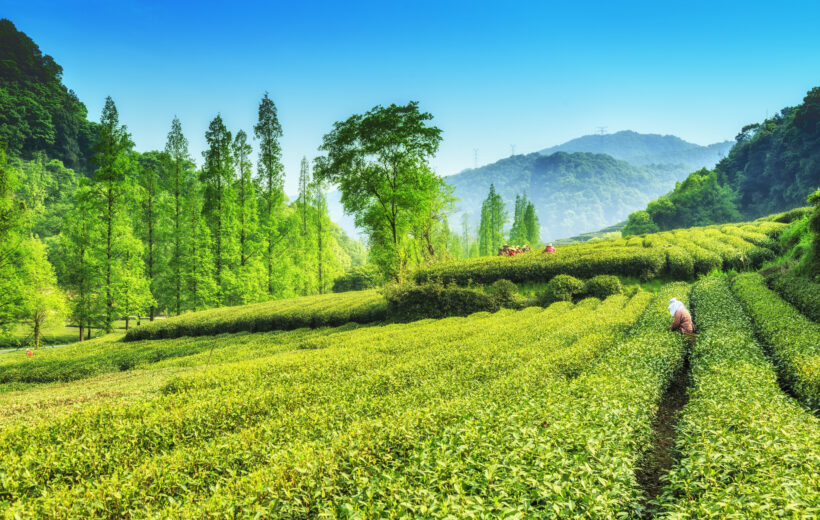Duration
Max People
Min Age
Tour Type
Overview
Nepal is the land of beautiful temples, majestic mountains, and pristine lakes. Nepal boasts eight of the world’s tallest mountains and the world’s oldest Hindu and Buddhist sites. While Kathmandu Valley is made of three ancient cities filled with enchanting medieval palaces, pagodas, temples, statues, and stupas, the rest of the kingdom offers unparalleled adventure options with an abundance of flora and fauna. Although modernization has set in, the quintessence of ancient Nepal remains amongst its people.
This program includes the historic city of Kathmandu & Bhaktapur.
TAILOR-MADE TRAVEL:
See something you don’t like or want to change? You can choose the duration and type of trip that best suites you: summit hikes, cultural communities, charming hotels, rafting, beach, diving… Let us design the perfect trip for you.
Included/Excluded
- Arrival/ Departure transfers in private air conditioned vehicle.
- Assistance at the airport.
- An English speaking guide
- Cable car Ticket
- Nepal entry visa fee
- Optional Mountain flight
- International airfare and airport tax
- Insurance and rescue of any form.
Day 1
Day 01:- Arrive in Kathmandu.
Upon arrival, you will be met by our airport representative and transferred to the hotel. The rest of the day will be at leisure.
Overnight at Hotel in Kathmandu
Day 2
In Kathmandu. Visit Chandagiri and Patan city
Visit Chandagiri.
Chandragiri Hill is situated at an altitude of 2540 m in height is a fantastic sight of Kathmandu Valley. It’s been among the significant destination point for both foreign and domestic tourists. The recently opened Cable Car out of the foothill into the very best has additional charm to the destination. Besides amazing all-natural forests and scenery, the mountain gets the historical importance too.
History of Chandragiri
According to the ancient mythology: The great King Prithvi Narayan Shah of Nepal, who’s blamed for unifying smaller nations into more significant Nepal, has history on this particular mountain. The gorgeous scene of afterward Malla dominated valley captured his eyes. The scenic views of the hills and geographic hilly terrain arenas would be the highlights of this hill. The joyous cable car ride of approximately 20 minutes within the lush green woods would be attractive. The mountain is also remarkably popular with hikers.
Nearby Chandragiri, there’s a gorgeous village of Chitlang in the Makwanpur district of Nepal. Another greenery, panoramic views of hills, Valley View, and chilled weather and the chance to see the temple on the hilltop are equally religious. You may book our Chitlang tour package with us as well. Chandragiri is much more famous due to two hours traveling from Kathmandu. Individuals may enjoy the scenic beauty on the surface of the mountain and chills outside in the refreshing atmosphere.
Feel the tranquility in only about one hour’s travel from Kathmandu. Embark on this particular day tour to get a fantastic experience of trees, scenery, and people. A journey of the cable car, mountain high chill breeze, and mysterious feeling would include gloss for your day excursion. Undoubtedly, this could be the most fantastic day tour which you find around Kathmandu Valley. The allure of the day tour is that you may see amazing Kathmandu valley and fantastic Himalayan range from west to east
Patan is also known as Lalitpur, the city of artisans is a paradise of fine arts and one of the three cities in the Kathmandu Valley. Located 5 miles southeast of Kathmandu City, Patan is best known for its rich cultural heritage. It is home to the valley’s finest craftsmen who have preserved such ancient techniques as the repoussé and lost wax process used to produce exquisite sculptures. The city retains much of its old charm with its narrow streets, brick houses, and a multitude of well-preserved Hindu temples, Buddhist monasteries (vihar), and monuments. The predominant sound in Patan is that of the tinkering of craftsmen bent over the statuettes they are shaping. As in Kathmandu, Hinduism and Buddhism have co-existed here for ages, influencing each other, and the religious harmony is exemplary.
The city of Patan offers visitors the chance to see an abundance of exquisite works of religious art and architecture. Patan is enclosed within four stupas, built in the 3rd century AD by Emperor Ashoka. Each stupa is symbolic of the Buddhist Wheel of Righteousness (‘Dharma Chakra’). In the heart of Patan, amidst the Patan marketplace lays the Patan Durbar Square, an area filled with ancient palaces, pagoda temples, stone baths, Hindu and Buddhist statues, engravings and bronze cravings. The Palace of the Malla Kings is one of the highlights of Patan. The palace complex lays the stone temple of Lord Krishna, which was built in the 16th century A.D. The Royal Bath (known as ‘Tushahity’) is another showpiece of fine stone and bronze carving in the palace complex.
Patan Durbar Square is one of seven monument zones in the Kathmandu Valley that together have been designated a UNESCO World Heritage Site. Also located in the square is the Patan Museum, formerly a Malla palace, which houses bronze statues and religious objects, some dating back to the 11th century.
Overnight at Hotel in Kathmandu
Day 3
In Kathmandu. Visit Boudhanath Stupa, Pashupatinath and Bhaktapur.
After having breakfast at the hotel, transfer to Boudhanath. This will take a short drive of around 5- 6 minutes (if traffic allows).
Boudhanath Stupa is one of the most imposing landmarks of Kathmandu and is a center of Tibetan Buddhism. The stupa is built on a massive three level mandala style platform and is 36 meters (118 feet) in height. The base of the stupa is adorned with 108 small images of the Dhyani Amitabha Buddha and inset with prayer wheels. Thousands of pilgrims circle the stupa in a clockwise direction each day spinning the prayer wheels. It is said that each spin of a prayer wheel is the equivalent of reciting the mantra. The stupa’s massive mandala makes it one of the largest spherical stupas in Nepal. The ancient stupa is one of the largest in the world. It is a UNESCO World Heritage Site.
The Stupa is on the ancient trade route from Tibet that enters the Kathmandu Valley by the village of Sankhu in the northeast corner. Tibetan merchants have rested and offered prayers here for many centuries. When refugees entered Nepal from Tibet in the 1950s, many decided to live around Boudhanath. The Stupa is said to entomb the remains of a Buddhist sage, perhaps parts of the Buddha’s body (bones, teeth), or sacred texts and other ceremonial objects.
After visiting the largest spherical stupa of Nepal, transfer to Pashupatinath Temple. It will take around 4-5 min drive from Boudhanath.
The magnificent Pashupatinath temple with its astonishing architectural beauty is situated on the bank of the sacred Bagmati River. Dedicated to the Hindu God of Destruction, Lord Shiva, this temple is regarded as the most scared of all Lord Shiva temples. Listed as a UNESCO World Heritage Site, the temple comprises of a richly ornamented pagoda that houses the sacred linga or phallic symbol of Lord Shiva.
Every year thousands of pilgrims from all over the world come to pay homage to this temple. Non-Hindu visitors are strictly prohibited to enter the temple however; they are permitted to view the temple from the east banks of the River Bagmati.
Pashupatinath is also Nepal’s most renowned Hindu cremation site. In the Hindu Culture, after a person is dead, his/her body is wrapped in cloth, placed on bamboo litters and brought to the cremation site where the eldest son in the family burns the body. The ashes from the dead body are collected and swept into the River Bagmati that eventually joins the Holy Ganges. Arya Ghat, is of special importance because it is here the members of the royal family were cremated. The main cremation site is Bhasmeshvar Ghat, which is the most-used cremation site in the Kathmandu Valley.
Later transferred to the ancient medieval city of Bhaktapur.
Bhaktapur: Perched on a hill at an altitude of 1,401 m, Bhaktapur or Bhadgaon, literally the ‘City of Devotees’ is a major tourist destination that takes visitors back in time. Bhaktapur lies 12 km east of Kathmandu city on the Arniko Highway that leads to the Chinese border. Bhaktapur is still untouched by rapid urbanization and has managed to retain its brick paved roads, charming red brick houses and a way of life that goes back to medieval times. This ancient city is also famous for pottery and woodcarving amply displayed on the squares and windows respectively.
The extraordinary Bhaktapur Durbar Square is a UNESCO World Heritage Site and its monuments reflect the glory days of the Malla Dynasty.
Among the three durbar squares, the Bhaktapur Durbar Square is by far the most elegant with its large open space facing south. The extraordinary Durbar Square with its extraordinary monuments reflects the glory days of the Malla dynasty when art and architecture thrived in the three cities of the valley.
Walking around pottery square and witnessing the craftsmanship of locals creating clay pots from clay soil represents treasured legacy that still survives in the ancient city of Bhaktapur.
Overnight at Hotel in Kathmandu
Day 4
Drive to Pokhara [6 hrs. approx.]
We drive to Pokhara which takes approximately 6 hrs. Upon arriving in Pokhara you will be transferred to the hotel to relax. In the evening stroll around Lakeside.
Pokhara’s bewitching beauty has been the subject of many travel writers. Its pristine air, spectacular backdrop of snowy peaks, serene lakes and surrounding greenery make it ‘the jewel in the Himalaya’, a place of remarkable natural beauty. With the magnificent Annapurna range forming the backdrop and the serenity of three major lakes – Phewa, Rupa and Begnas – Pokhara is the ultimate destination for relaxation. Pokhara Valley is the end of the famous Annapurna Circuit and a gateway to some of the most famous long-distance treks in Nepal. It also offers plenty of rewarding short walks and day trips suitable for children and weary trekkers. It is the second largest city in Nepal and sits high on the list of ‘must visit’ places in Nepal.
On the way you have an option to take a blessings of Goddess Manakamana. It is situated in the hilltop, for that you have to take a cable car for 10 minutes. On extra of INR 550 you can take a cable car to go to the Temple. As that temple is famous amongst Hindus, so there might be crowd all the time and people do sacrifice of animals on temple as well.
Overnight at Pokhara
Day 5
In Pokhara
Visit the following places in Pokhara:
Phewa Taal: Pokhara offers a variety of places to be explored such as the enchanting Phewa Taal or Phewa Lake, the second largest lake in Nepal. The lake is stream fed but a dam regulates the water reserve, therefore, it is classified as semi-natural freshwater lake. The lake offers boating services to enjoy the beauty and serenity Pokhara has to offer. Wooden boats can be rented along the shoreline. The north shore of the lake has developed into a lakeside tourist hub with a number of souvenir stores, bookshops, hotels, restaurants and bars catering to tourists.
The two-story pagoda of the Barahi Temple is situated in a small island in the Phewa Lake surrounded by marvelous views. This Hindu temple in Nepal is dedicated to Goddess Ajima in the form of a boar called Barahi to pierce her evil enemies with her pointed tusks. Barahi is pictured with the face of a boar with a cup in one hand and fish in the other. Barahi Temple is a very important center of worship for the Hindu devotees and locals as well as tourists constantly visit the temple.
Bindebashini Temple: This is one of the oldest temples in Pokhara. Legend says that when Pokhara was a part of Kaski Kingdom, the main deity of the temple, Goddess Durga, was brought from India. Apart from the peace and tranquility that can be felt in this region, the premises of the temple offers a good view of the Himalaya on a clear day. The temple is in the area of the Bazaar; hence, a journey of the old bazaar can be combined with a visit to the temple.
The Devi’s fall is a lovely waterfall that marks the point where a stream from Phewa Lake vanishes underground through a natural tunnel. The site is named after a Swiss tourist who was unexpectedly swept away while swimming at the Phewa Lake in 1961. The body of the tourist was never recovered.
Gupteshwor Mahadev Cave, across the Devi’s fall, is one of the longest caves in Nepal. The cave contains a huge stalagmite worshiped as a Shiva lingam that looks like snake’s head and a tortoise body.
Overnight at Pokhara.
Day 6
In Pokhara
After breakfast visit World Peace Pagoda a Buddhist stupa built by the Buddhist monks of the Japanese Nipponzan Fujii organization at a narrow ridge above the Phewa Taal. Visit an International Mountain Museum which displays the history, culture, geology, flora and fauna of the Himalayas. The museum is dedicated to the mountains of Nepal and the mountaineers who have climbed them.
Overnight at Hotel.
Day 7
Drive to Kathmandu [200 km/ approx. 5-6 hours’ drive]
After breakfast drive back to Kathmandu
We will transfer you to Swyambhunath Stupa.
Swayambhunath Stupa is a UNESCO WORLD Heritage Site. This ancient stupa is the most sacred Buddhist shrines of Nepal. Legend has it that when Kathmandu Valley was a lake 2000 years ago, a single lotus flower grew at the center of the lake. When Saint Manjushree, the Bodhisatva drained the lake with a single slash of his sword, the lotus settled on top of a hill and magically turned into a stupa. Hence, Swayambhunath is also known as a Self-Created stupa.
Day 8
Final Departure.
Today you will be transferred to the airport for your onward journey.

